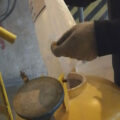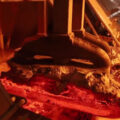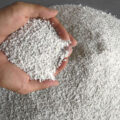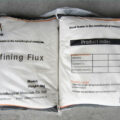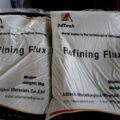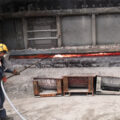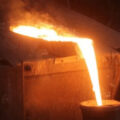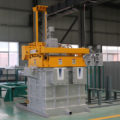Refining agent degassing is currently the most commonly used method in aluminum plants to eliminate pinholes in aluminum alloy castings. In order not to cause a large amount of splashing of the aluminum liquid, the degassing agent can be added in batches, and the degassing ends the slag removal.
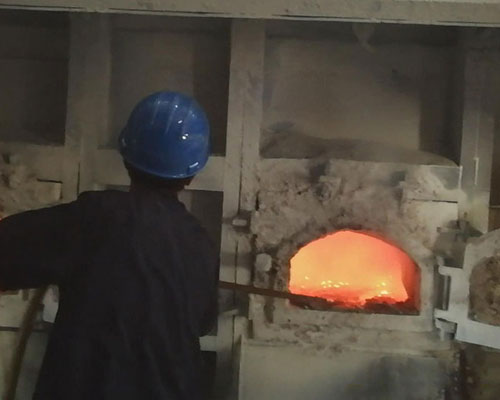
When aluminum alloy is smelted, it takes a process for hydrogen to dissolve into molten aluminum. Therefore, strengthening the control of the smelting process is of great help in controlling the intake of aluminum alloy. Production practice shows that the hydrogen absorption of molten aluminum is carried out on the surface. It is not only related to the partial pressure on the surface of the molten aluminum, but also has a greater relationship with the alloy melting temperature and melting time.
The higher the alloy melting temperature, the longer the melting time and the retention time of molten aluminum after melting, the more fully hydrogen diffuses in the molten aluminum, the greater the amount of hydrogen absorbed by the molten aluminum, and the greater the probability of needle emergence. Someone has done an experiment. The longer the molten aluminum is stored, the gas content in the aluminum alloy increases approximately proportionally. Therefore, in order to reduce the absorption of hydrogen during aluminum alloy melting, we must strictly implement aluminum alloy melting process regulations.
Pinhole is a casting defect that is easy to appear in aluminum alloy castings and has a certain impact on the quality of castings. Hydrogen is the main cause of pores, and the main source of hydrogen is the decomposition of water vapor. The oily dirt, organic matter, salt flux, etc. brought in by the metal charge or the return charge can react with the molten aluminum to generate hydrogen. The reason for the generation of water vapor in the aluminum alloy smelting process is the main factor directly affecting the formation of pinholes.

Refining Agent Degassing
After proper heat treatment and screening, the refining flux becomes a uniform size, which is beneficial to transfer to the bottom layer of molten aluminum in a refining tank with (N2 or Ar) gas as the carrier.
Through the physical and chemical changes of the aluminum melt, many small bubbles are formed, which are incomplete contact with the aluminum melt, thereby separating hydrogen and other harmful gases. At the same time, the adsorption and fusion compounds contained in the refining flux can strongly adsorb and fuse oxides and floats, and adhere to the bubbles, and are brought to the surface of the molten aluminum as the bubbles rise, thereby achieving degassing and slag removal The purpose is purification.
Using Refining Agent Degassing is both environmentally friendly and economical, and can meet the requirements of high value-added and high-tech performance aviation, transportation and other aluminum alloy precision casting products, such as computer hard disks, micron aluminum foil raw materials.



